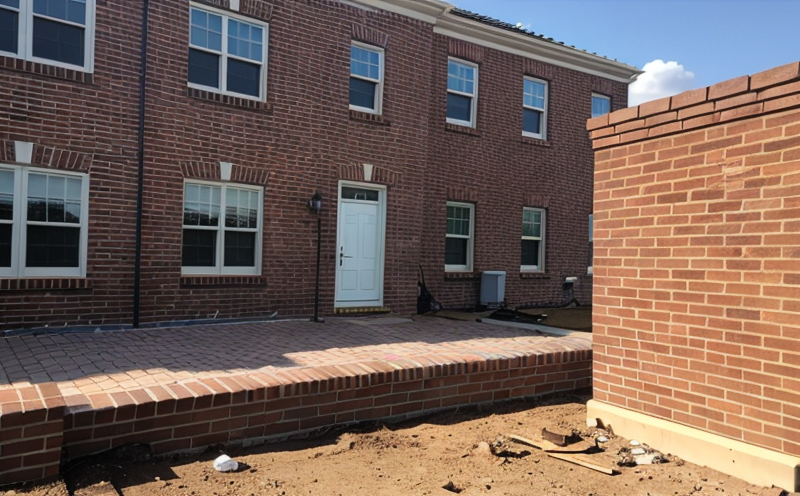ISO 10545 Dimensional Tolerance Assessment
The ISO 10545 standard provides a comprehensive framework for assessing dimensional tolerance in masonry and brick products. This service is particularly critical for ensuring that the dimensions of bricks, blocks, and other masonry materials meet the required specifications as defined by international standards.
Accurate dimensional control ensures structural integrity and aesthetic uniformity in construction projects. Variations in size can lead to significant issues during installation, affecting both the appearance and stability of a building. This service is essential for quality assurance and compliance with industry regulations.
The process begins with selecting appropriate specimens that represent the batch or production run being tested. Specimens are prepared according to standard procedures to ensure they are representative of the product under test. Once prepared, the specimens undergo detailed dimensional measurements using precision instruments such as micrometers, calipers, and laser scanners.
These tools provide precise measurements that can be compared against the tolerances specified in ISO 10545. The standard defines acceptable ranges of variation based on product size and intended use. For instance, smaller bricks may have tighter tolerances than larger blocks to ensure they fit together seamlessly during construction.
The dimensional tolerance assessment is not just a one-time measurement but an ongoing quality control process. It involves regular sampling throughout the production cycle to monitor for any deviations that could indicate process issues or material inconsistencies. This continuous monitoring helps manufacturers identify and rectify problems early, preventing costly rework later in the construction phase.
The results of these assessments are documented meticulously and reported to relevant stakeholders such as quality assurance teams, project managers, and clients. The reports typically include detailed descriptions of the testing process, measured dimensions, and comparisons against specified tolerances. They also highlight any areas where compliance was not met so corrective actions can be taken.
Understanding how dimensional tolerance impacts different aspects of construction is crucial for effective management. For example, in high-rise buildings with intricate design elements, precise brick placement is vital to maintaining structural stability and appearance consistency. In infrastructure projects like bridges or tunnels where the alignment of components must align perfectly over long distances, accurate dimensions are paramount.
Compliance with ISO 10545 standards ensures that all parties involved in construction—from manufacturers to architects—are working towards a common goal of excellence. By adhering strictly to these specifications, builders can avoid costly delays and penalties associated with non-compliance while enhancing overall project quality.
The importance of this service extends beyond mere compliance; it plays a pivotal role in ensuring long-term durability and safety of structures. When every component fits together correctly within its designated space, buildings are more likely to withstand environmental pressures such as weathering and seismic activity without compromising their integrity.
Why It Matters
The precision demanded by ISO 10545 in dimensional tolerance assessment is crucial for several reasons. Firstly, it directly impacts the structural soundness of buildings and infrastructure projects. Even minor deviations in size can accumulate over large-scale constructions, leading to significant issues like cracks or misalignments that compromise safety.
Secondly, adhering to these standards helps maintain aesthetic consistency across a project. In architecture where visual harmony is key, precise dimensions ensure that bricks and blocks fit together seamlessly, creating an aesthetically pleasing end result without any noticeable gaps or overlaps.
The third reason lies in enhancing overall project quality. By consistently meeting dimensional requirements, construction firms demonstrate their commitment to excellence, which can enhance their reputation and lead to more lucrative contracts down the line. Moreover, it reduces risks associated with rework due to poor initial design execution.
Fourthly, this service aids in promoting sustainable practices within the industry by reducing waste generated from incorrect sizing leading to material inefficiencies during production or installation stages. Lastly but certainly not least, meeting these standards ensures compliance with regulatory requirements set forth by governing bodies around the world, thereby avoiding potential legal complications.
Benefits
- Enhanced Quality Control: Continuous monitoring of dimensional tolerances allows for early detection and correction of inconsistencies in manufacturing processes.
- Improved Safety Standards: Precise dimensions contribute significantly to the structural integrity and stability of buildings and infrastructure projects, reducing the risk of accidents or failures.
- Aesthetic Uniformity: Consistent sizes ensure that bricks and blocks align perfectly during construction, resulting in visually appealing structures.
- Economic Efficiency: By minimizing waste through accurate sizing, this service helps reduce costs associated with material inefficiencies and rework. It also enhances the overall profitability of construction projects.
- Reputation Building: Meeting high-quality standards can significantly enhance a company's reputation among clients and other stakeholders in the industry.
- Regulatory Compliance: Ensuring adherence to ISO 10545 helps avoid potential legal issues associated with non-compliance, thereby protecting both manufacturers and contractors legally.





